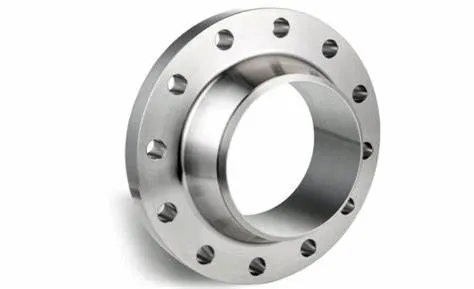-
Cangzhou Yulong Steel Co., Ltd.
-
Phone:
+86 13303177267 -
Email:
admin@ylsteelfittings.com

Nov . 05, 2024 04:47 Back to list
en 1092 1 standard
Understanding EN 1092-1 Standard A Comprehensive Overview
The EN 1092-1 standard, established by the European Committee for Standardization (CEN), outlines specifications for flanges used in piping systems. This standard, which is part of a broader set of standards regarding flanges, plays a crucial role in ensuring safety, functionality, and compatibility within various industrial applications. In this article, we will explore the key aspects of the EN 1092-1 standard, including its scope, classifications, dimensions, materials, and the significance of adherence to this standard.
Scope of EN 1092-1
EN 1092-1 specifically addresses circular flanges for pipes, fittings, and valves. It sets the fundamental requirements for their design, construction, and testing. The standard is applicable to various industries, including petrochemical, water treatment, and power generation, making it crucial for ensuring that the systems utilizing these components operate effectively and safely.
The standard is designed to enhance the interconnectivity of piping systems within Europe, ensuring that flanges produced by different manufacturers meet the same criteria. This interoperability minimizes risks associated with installation and maintenance, where the compatibility of components is paramount.
Classifications
The EN 1092-1 standard classifies flanges based on their pressure-temperature ratings and the type of connection. These classifications include
1. Type of flange This involves several designs such as slip-on, weld neck, blind, and threaded flanges, each serving distinct purposes in piping systems. 2. Pressure ratings Flanges are rated based on their ability to withstand specific pressures at designated temperatures. This is categorized using different pressure classes, which helps engineers and technicians select the appropriate flange for their specific application. 3. Sizes The standard provides comprehensive charts and guidelines on the various nominal sizes, ensuring a uniform approach to sizing across different manufacturers.
Dimensions
en 1092 1 standard

One of the primary components of EN 1092-1 is its detailed dimensional specifications. The standard includes nominal dimensions for flanges, such as their outer diameter, bolt hole arrangements, and the thickness of the flange. By adhering to these dimensions, manufacturers can guarantee that the flanges they produce will fit seamlessly with pipes and valves designed according to the same standard. The dimensional aspect ensures that installation challenges are minimized, thereby promoting efficiency and reliability within piping systems.
Materials
The EN 1092-1 standard specifies various materials that can be used for manufacturing flanges. Common materials include carbon steels, stainless steels, and special alloys, which are selected based on the specific requirements of the operational environment. For instance, in corrosive environments, materials that offer enhanced resistance to corrosion are mandated. The standard also covers the necessary testing and certification of materials to ensure they meet mechanical and chemical properties required for safe operation.
Importance of Compliance
Compliance with the EN 1092-1 standard not only ensures the effective functioning of piping systems but also enhances safety. Noncompliance can lead to disastrous failures, including leaks or explosions due to pressure build-up. Moreover, following this standard also reflects a commitment to quality and reliability, which is essential for industries that prioritize safety and operational efficiency.
In a globalized market, where the interchangeability of components is necessary, the EN 1092-1 standard facilitates international trade by providing a clear set of guidelines that are recognized throughout Europe and beyond. Companies that adhere to these standards can bolster their reputation and competitiveness in the marketplace.
Conclusion
EN 1092-1 is a pivotal standard that governs the design and use of flanges within piping systems across various industries. By ensuring compatibility and safety through defined classifications, dimensions, and material specifications, this standard plays a significant role in minimizing risks and promoting efficiency. For manufacturers and industry professionals, understanding and adhering to the EN 1092-1 standard is essential not only for compliance but also for the long-term success of their operations. With continued developments and the growing importance of quality standards, the relevance of EN 1092-1 remains ever-increasing in today’s industrial landscape.
Latest news
-
ANSI 150P SS304 SO FLANGE
NewsFeb.14,2025
-
ASTM A333GR6 STEEL PIPE
NewsJan.20,2025
-
ANSI B16.5 WELDING NECK FLANGE
NewsJan.15,2026
-
ANSI B16.5 SLIP-ON FLANGE
NewsApr.19,2024
-
DIN86044 PLATE FLANGE
NewsApr.19,2024
-
DIN2527 BLIND FLANGE
NewsApr.12,2024
-
JIS B2311 Butt-Welding Fittings LR/SR 45°/90° /180°Seamless/Weld
NewsApr.23,2024
-
DIN2605-2617 Butt-Welding Fittings LR/SR 45°/90°/180° Seamless/Weld
NewsApr.23,2024











